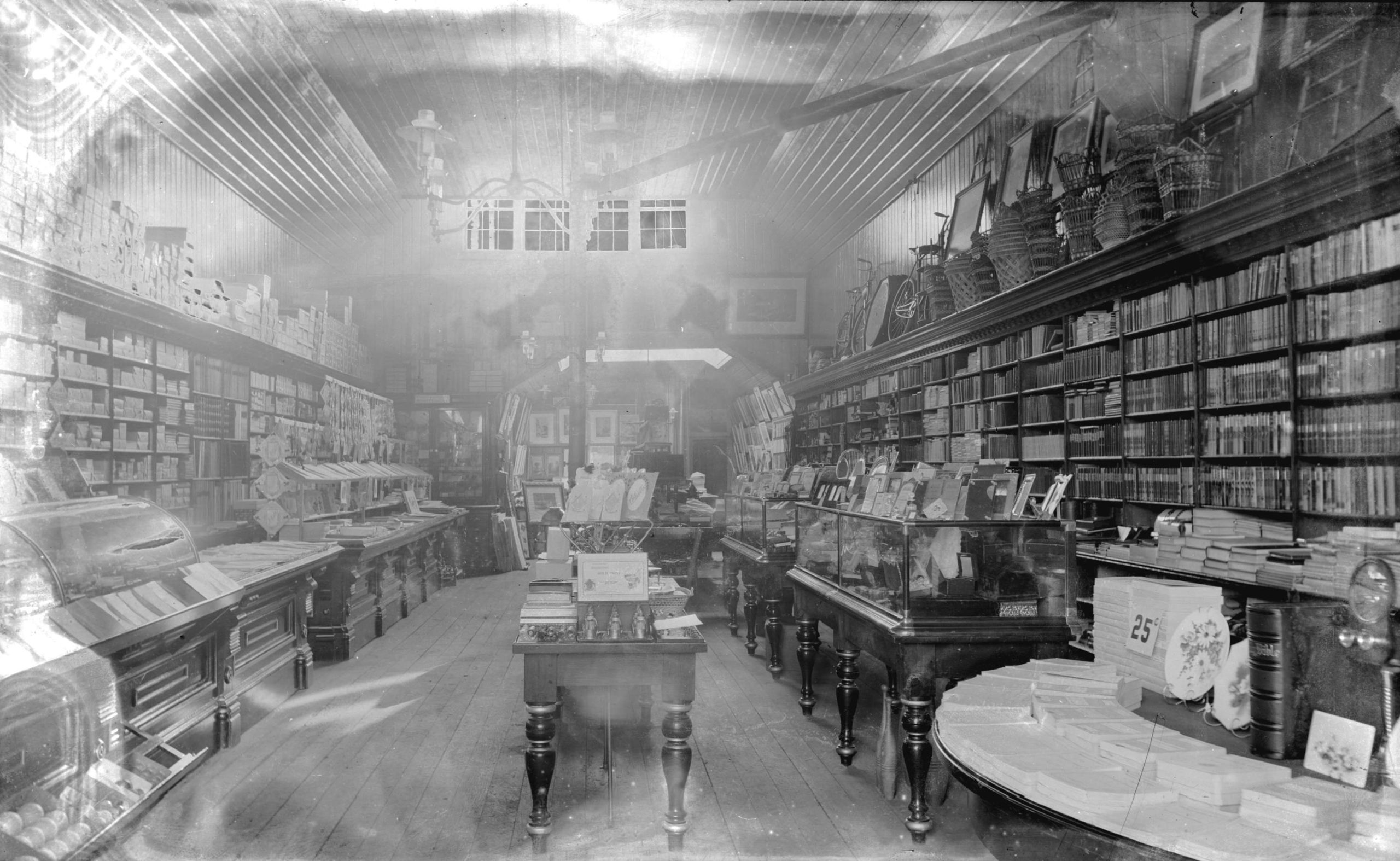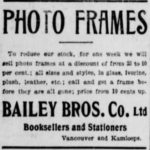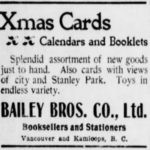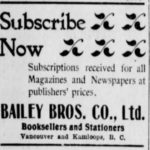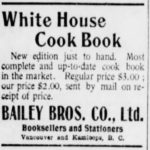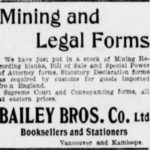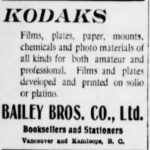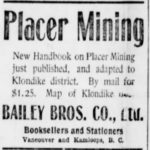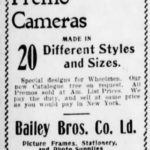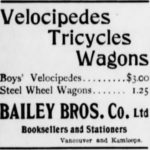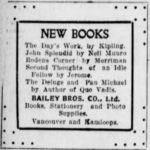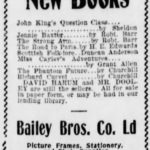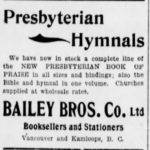Picking up where I left off in part 1 of the Bailey Bros. story, Charles Bailey’s death in 1896 must have struck a major blow to the photography and stationery firm he left behind, and to his business partner and brother, William.
Charles had been the man behind the lens for so many Bailey Bros. photographs, and presumably he was the expert behind the firm’s stock of “photographic views,” photography supplies, cameras, picture frames, and mouldings—said to be the largest such stock in the province (1). Now William needed to keep Bailey Bros. going without his brother by his side.
Even though Bailey Bros. continued to be known for its photography-related merchandise, the company’s focus widened to include a more diverse stock of books, stationery, and fancy goods in the years after Charles’s death, or at least the firm’s frequent newspaper ads in the Vancouver Daily World from 1896 into the early 1900s give this impression:
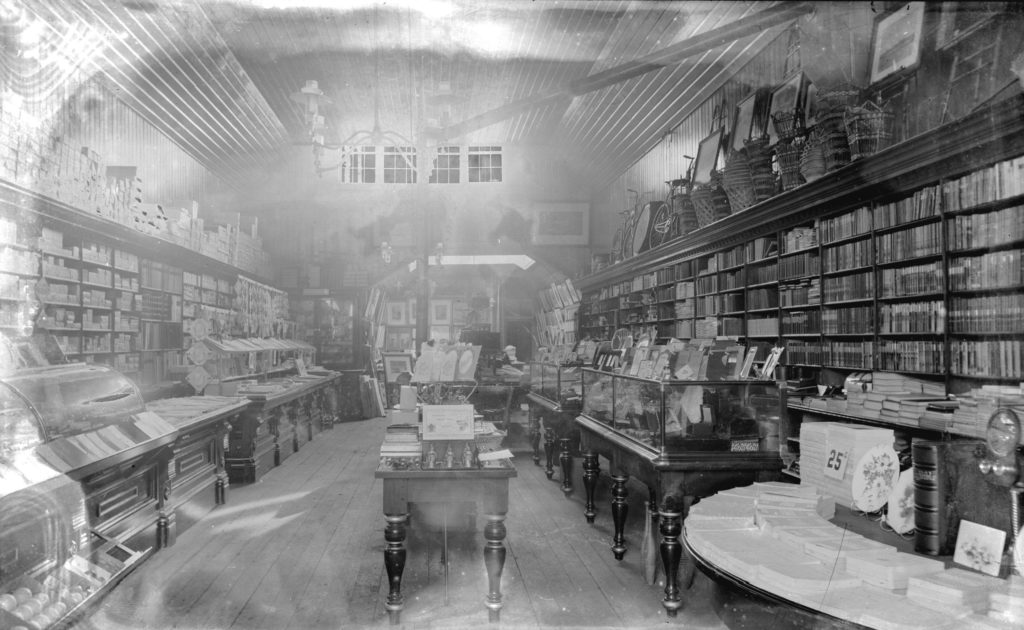
In January 1901, William married Jean Grace MacKinnon in Victoria. One of the newspapers reporting on the event said that the wedding came as a surprise to friends of both bride and groom (though the same newspaper reported that it was Charles, not William, who was married, which throws the accuracy of the rest of the article into question!) (2).
It was also in 1901 when William sold off Bailey Bros.’ Kamloops branch to Smith Bros. & Vernon (3). Over the next few years, he announced his intentions to retire from the retail book and stationery trade in Vancouver as well, but either he couldn’t find a buyer at the right terms, or he simply kept changing his mind.
The first such announcement came in December 1903: “Remember we are positively giving up the retail business and everything must be sold,” it read, as if some would have reason to doubt the plan (4). A subsequent announcement in February 1904 said that Bailey Bros. was building a new three-storey warehouse on Pender Street (to add to another warehouse it occupied on Hastings), and closing-out sales for its retail lines continued to appear that spring.
It seemed neither plan came to fruition.
Instead, William’s next move was actually to expand the retail side. In July 1906, Bailey Bros. opened a new store at 540 Granville, taking over the premises formerly occupied by bookseller Norman Caple (whom I’ll talk about in a future post). William planned to cater “more to the tourist trade” on Granville, while his store at 138 Cordova would continue to carry “a large general book and stationery stock” (5).
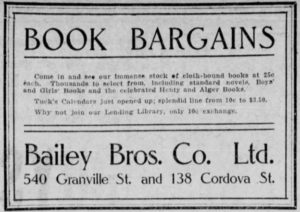
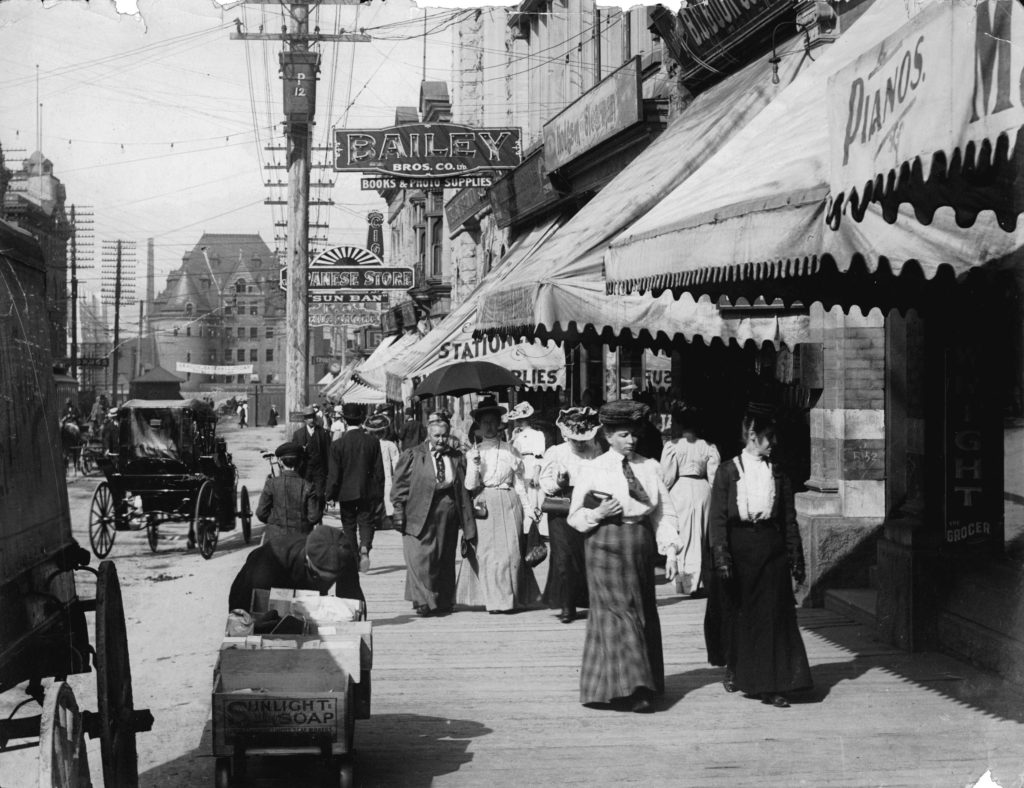
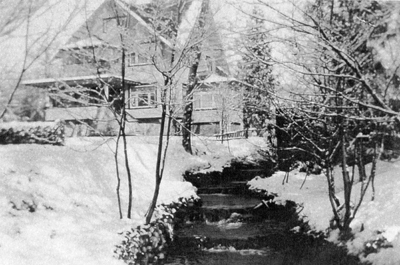
In 1907, William once again advertised that the 138 Cordova branch was for sale—perhaps he was trying to generate some cash for the large family home he was having built in North Vancouver at the corner of Chesterfield and Keith Road, which had twelve rooms, two bathrooms, five fireplaces, and one acre of lawn (6). However, the Cordova store remained a Bailey Bros. outlet through 1909, when ads about its sale resumed (7).
In 1910, the branch at 138 Cordova was taken over by the Vancouver Book Co., managed by Gordon Tanner, and the 540 Granville location became the Granville Stationery Co., whose principals were former Bailey Bros. clerk William Payne and his partner J.P. Mott Woodworth (8).
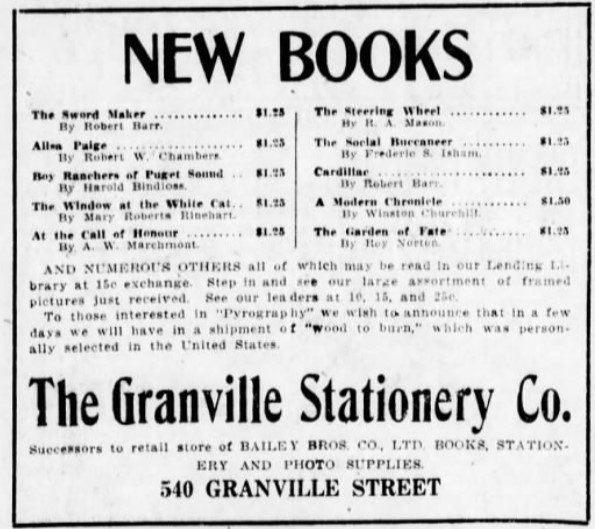
Granville Stationery also bought Bailey Bros.’ wholesale department in 1911, with plans to “extend considerably the activities of the firm they now control” (9). What happened next will have to be the subject of the third and final post in this series.
Notes
(1) “Bailey Bros. Co., Limited,” Vancouver, the Queen City of the Wonderful West (Vancouver: Daily Province, 1898).
(2) “Bailey-MacKinnon,” Vancouver Daily World (January 29, 1901), 5; Daily Colonist (January 29, 1901), 5; Bookseller and Stationer (February 1901), 11.
(3) Bookseller and Stationer (June 1901), 1.
(4) “To Erect Big Warehouse” Province (February 12, 1904), 8; “Retiring from Business,” Vancouver Daily World (March 4, 1904), 8.
(5) Bookseller and Stationer (July 1906), 23.
(6) “Fine Residence Nears Completion,” Vancouver Daily World (March 28, 1908), 20; “To Let,” Vancouver Daily World (October 5, 1911), 18.
(7) Vancouver Daily World (July 13, 1907), 23; Vancouver Daily World (April 21, 1909), 26; Vancouver Daily World (October 5, 1909), 26.
(8) The Vancouver Book Co. remained at 138 Cordova for only a short time. By 1911 it was at 932 Granville Street: Henderson’s Greater Vancouver City Directory (1910–11). The information about Granville Stationery Co. is from Vancouver Daily World (March 9, 1910), 5, and Henderson’s Greater Vancouver City Directory (1910). When the Vancouver Book Co. failed in 1913, Granville Stationery bought its stock and sold it off at clearance prices: “The Granville Stationery Store Is Selling Off a Bankrupt Stock,” Vancouver Daily World (August 4, 1913), 5.
(9) “Secures Wholesale End,” Province (June 8, 1911), 28.
